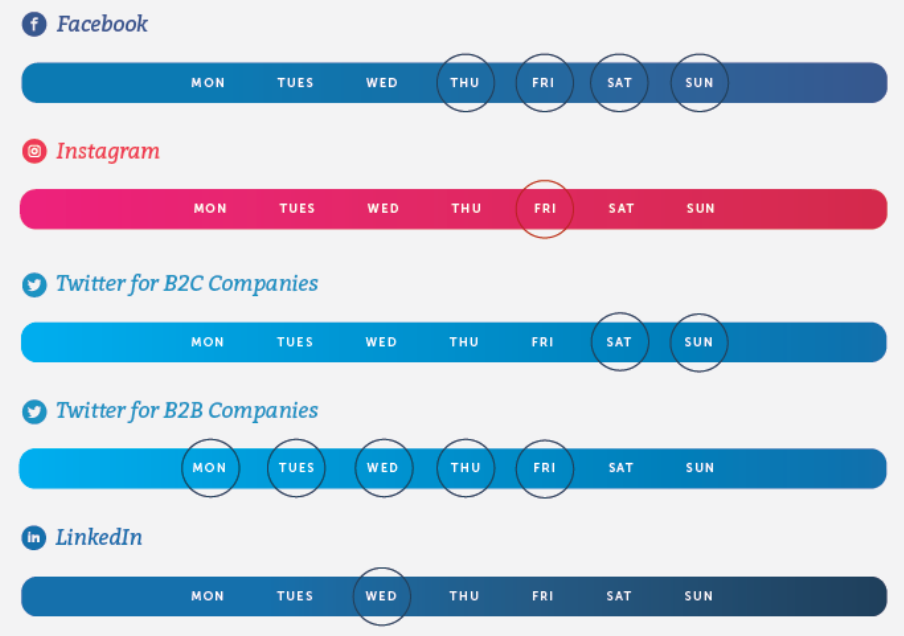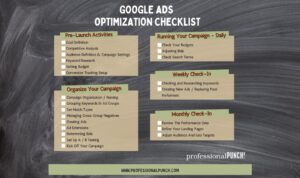The internet is a rapidly updating void. A big one.
Social media is a great way to market your small business and engage with your audience in a new, relatable way. The right business strategy ensures your content is optimized to be seen and features what your consumers actually want to see. So, what should you do to ensure your brand is not being lost in it?
Try following some of these social media timing best practices to make the most of your business’ social media marketing strategy.
Maintaining Your Digital Presence with Social Media Timing
 Marketing your small business involves developing a brand voice, creating quality content and engaging with consumers. However, the engagement of your brand may be lost if your posts and marketing emails aren’t scheduled at a frequency that your audience keeps up with.
Marketing your small business involves developing a brand voice, creating quality content and engaging with consumers. However, the engagement of your brand may be lost if your posts and marketing emails aren’t scheduled at a frequency that your audience keeps up with.
Understanding social media timing takes into account the following factors:
- The platform and your audience’s relation to it.
- Regions and time zones.
- Your overall goals.
Studies have helped guide small businesses with the best times to schedule posts to social media platforms. Each platform is different and can help market your content based on the different functions and advantages.
Linking to Customers
Surprisingly, CEOs do not tend to use social media — with the exception of LinkedIn, which is primarily used as a platform for professional connections and business-to-business communication, but not used by the public, or business-to-customer, as often. As such, usage on LinkedIn is a narrow focus and correlates to the grind of the work week. Peak posting times are midweek – Wednesday is best – 10 AM to 12 PM, or at the end of a workday.
On the other end of the social media timing spectrum, Pinterest also has a very narrow high usage window: during late hours of the night, 2 – 4 AM, because it is primarily used for inspiration, such as cooking, fashion or DIY ideas.
Timing Is Everything They Say
Other platforms, like Facebook, Instagram and Twitter, feature more generalized use. Engagement tends to correlate with the average person’s workday, especially during commutes, lunch breaks and weekends.

Best Days to Post, Courtesy of CoSchedule.com
- Commutes, waking and winding down play a role in increased engagement on Twitter, averaging high engagement around 9 AM and 9 PM. The best days to post depend on your target demographic.
- Instagram generally sees high uses during lunch breaks, around 1 PM, and after a traditional work day, around 5 PM. Fridays are ideal.
- Facebook engagement is highest around 9 AM, noon and 4 PM. The best days to post are Thursday through Sunday.
These examples can help you understand how specific consumers gravitate towards different platforms. And help you zero in on specific customers or demographics.
A note regarding time zones… 80% of the country’s population is in the Central and Eastern time zones. If your business spans the U.S., it then makes sense to use these time zones as your posting guide. If your customers are primarily local, post in the local time zone.
You’ve Got [to Send] Mail
 Email marketing campaigns operate similarly to social media, in that each brand, audience and industry operates a little differently. Often what works for one industry will not work for another, and vice versa. However, considering trends in the average person’s workday is a good place to start; people tend to check email in the early morning, midday about lunch time, and toward the end of the workday.
Email marketing campaigns operate similarly to social media, in that each brand, audience and industry operates a little differently. Often what works for one industry will not work for another, and vice versa. However, considering trends in the average person’s workday is a good place to start; people tend to check email in the early morning, midday about lunch time, and toward the end of the workday.
Experiment on the platforms or within your own email marketing campaigns – i.e. beta test – to refine your timing schedule, increase opens and boost clicks.
Social Media Strategy SOS
Great – you’ve figured out the best times to post on your high-traffic social media platforms, and determined when your customers open your emails most. So do you have to set a timer and stop your other work every time you need to post?
With both email and social media platforms, there are tools out there to help you schedule your communication days, weeks and even months in advance. Many tools even integrate with websites so that you can automate posts every time you add a new blog or event.
A great social media management tool will provide a space for you to engage with your audience, schedule posts, and then analyze how your content performs. This is an important step that gives you the opportunity to make changes as necessary and continue engaging with your audience effectively.
Of course, your small business might benefit more from one-on-one consultation and a customized social media timing strategy. To learn more about how to boost customer engagement and grow your business organically, contact Professional PUNCH for a complimentary marketing analysis.






